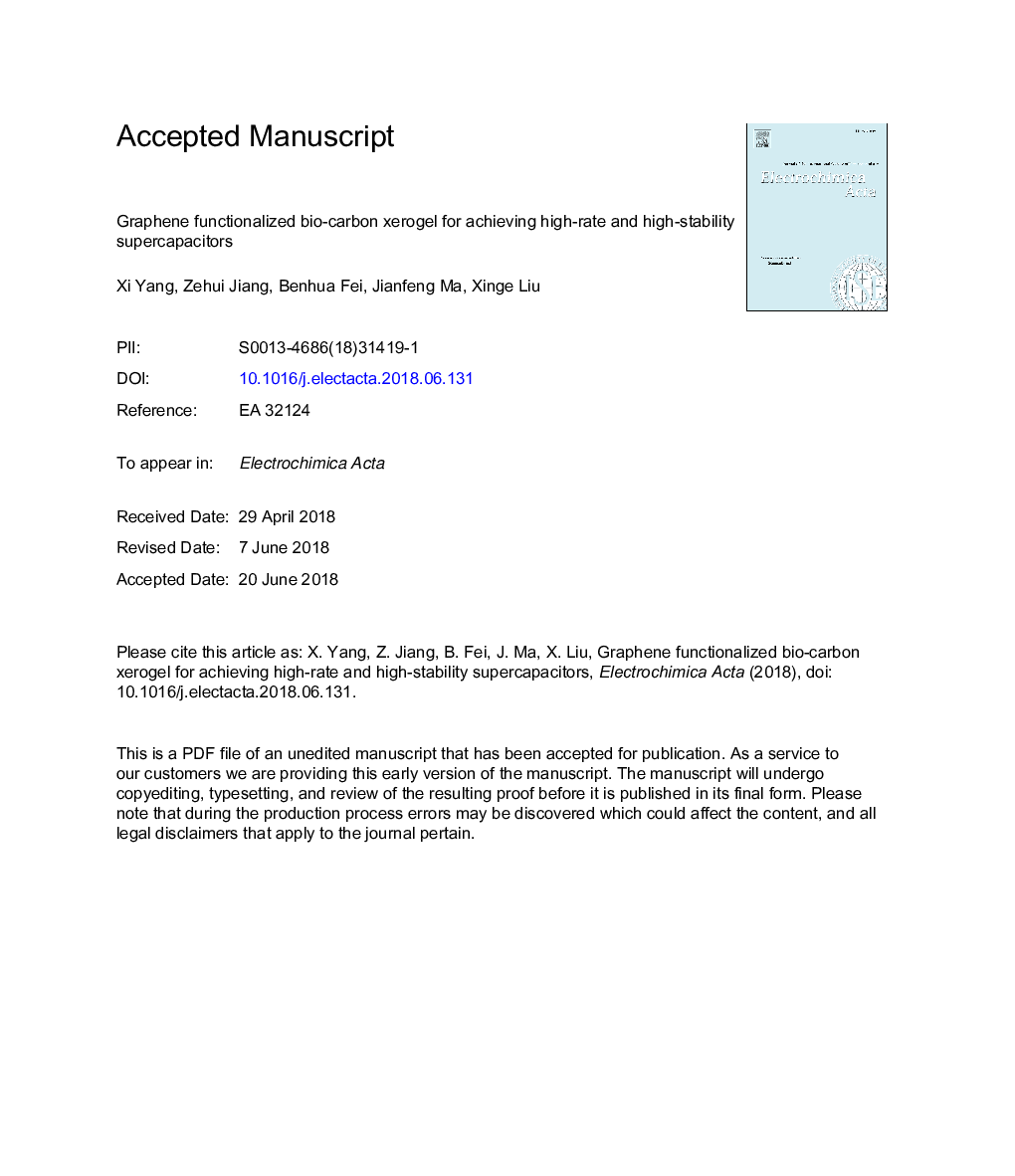| Article ID | Journal | Published Year | Pages | File Type |
|---|---|---|---|---|
| 6602292 | Electrochimica Acta | 2018 | 26 Pages |
Abstract
Biomass carbons have attracted considerable attention in the pursuit of cheap and renewable electrode materials. However, a low-energy route (like hydrothermal carbonization) is still a challenge for achieving bio-carbon electrodes with high-performance. Herein, a high-rate and high stability supercapacitor was fabricated based on graphene functionalized bio-carbon xerogel. The supercapacitor shows comparable or even higher performance than reported supercapacitors derived from bio-carbons and graphene-based materials, which can be attributed to sandwich-like porous structure that carbon spheres interspersed between porous graphene nanoplatelets. It demonstrates a superior specific capacitance of 139â¯Fâ¯gâ1â¯at a superhigh current of 100â¯Aâ¯gâ1 in an aqueous electrolyte, maintaining 73.5% of that at 1â¯Aâ¯gâ1 (189â¯Fâ¯gâ1). More importantly, the device retains 100% of initial specific capacitance, energy density and power density after 10000 cycles at 5â¯Aâ¯gâ1. This work paves the way to develop renewable supercapacitors based on low-cost biomass resources and low-energy fabrication.
Related Topics
Physical Sciences and Engineering
Chemical Engineering
Chemical Engineering (General)
Authors
Xi Yang, Zehui Jiang, Benhua Fei, Jianfeng Ma, Xinge Liu,
